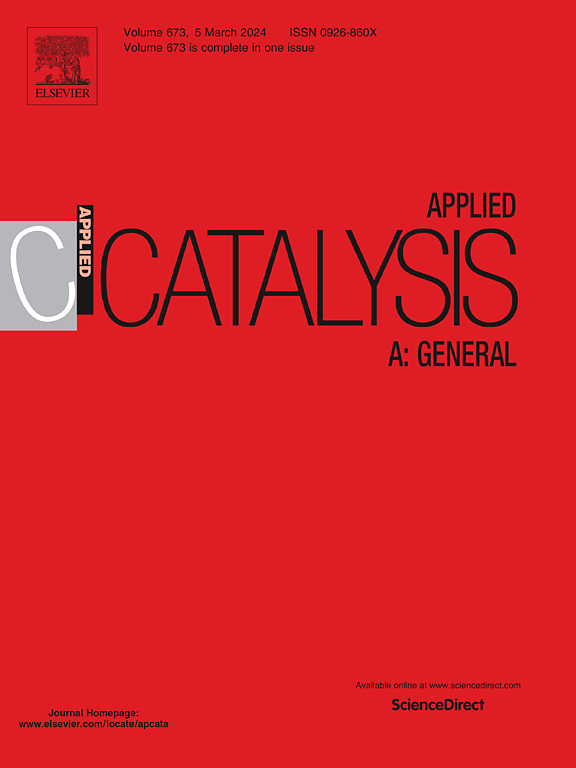Aqueous-phase reforming of methanol, acetic acid, 4-methylcatechol, and phenol over supported nickel and platinum catalysts
IF 4.7
2区 化学
Q2 CHEMISTRY, PHYSICAL
引用次数: 0
Abstract
The aqueous phase reforming of methanol, acetic acid, phenol, and 4-methylcatechol was studied to evaluate the potential of using process water from hydrothermal liquefaction of black liquor for hydrogen production. Various catalysts, including Cu- or Co-doped nickel and commercial Pt/AC, were tested under plug-flow conditions (230 °C, 32 bar). The platinum catalyst showed superior stability, maintaining high conversion with methanol and acetic acid. However, it showed no activity with phenol and deactivated rapidly when exposed to 4-methylcatechol. Doped nickel catalysts experienced severe deactivation, particularly with acetic acid and phenolic compounds. While nickel catalyst deactivated in the presence of acetic acid, Pt showed stable conversion but favored decarboxylation reaction. APR of methanol primarily produced H2 and CO2, with NiCu/γ-Al2O3 being the most selective for H2. Co-doped nickel favored hydrogenation, forming CH4 and thus reducing H2 yield. APR of phenol and 4-methylcatechol produced H2, CO2, and hydrodeoxygenated or hydrogenated liquid products.
求助全文
约1分钟内获得全文
求助全文
来源期刊

Applied Catalysis A: General
化学-环境科学
CiteScore
9.00
自引率
5.50%
发文量
415
审稿时长
24 days
期刊介绍:
Applied Catalysis A: General publishes original papers on all aspects of catalysis of basic and practical interest to chemical scientists in both industrial and academic fields, with an emphasis onnew understanding of catalysts and catalytic reactions, new catalytic materials, new techniques, and new processes, especially those that have potential practical implications.
Papers that report results of a thorough study or optimization of systems or processes that are well understood, widely studied, or minor variations of known ones are discouraged. Authors should include statements in a separate section "Justification for Publication" of how the manuscript fits the scope of the journal in the cover letter to the editors. Submissions without such justification will be rejected without review.
 求助内容:
求助内容: 应助结果提醒方式:
应助结果提醒方式:


